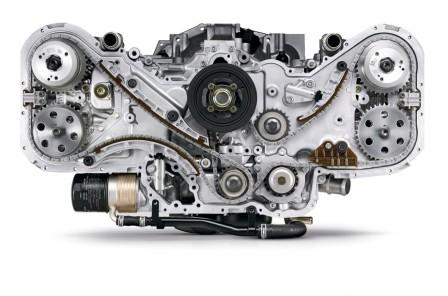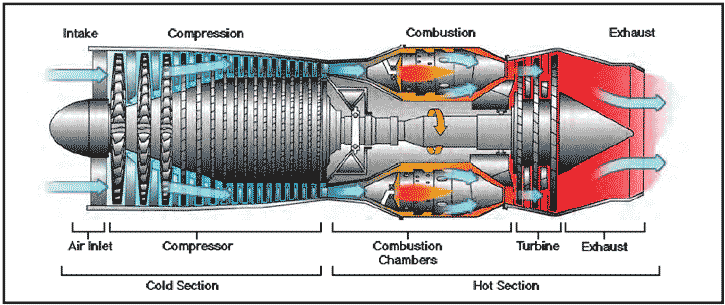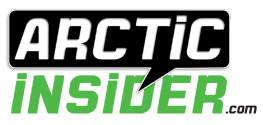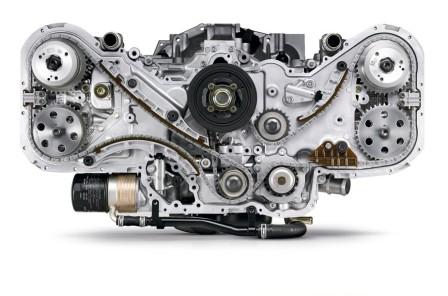
As the debate over 2-stroke vs. 4-stroke snowmobile engines continues with no clear winner. However, a new concept has emerged that might leapfrog all existing engine technology, paving the way as the NBT (next big thing) in the motorsports industry.
Speaking on condition of anonymity, an engineer from the aftermarket company Boswell Carburetion confirmed plans for a new engine design that sidesteps the conundrum of whether to produce 2-stroke or 4-stroke engines.
What might the NBT be? A 3-stroke diesel.
“There has never been a period in the 50-plus years of snowmobile history that’s presented a greater challenge of engine development than the current one,” said acknowledged a well-know snowmobile journalist and historian.
Why? All engines must meet EPA-mandated emissions levels; a large percentage of snowmobilers are unwilling to accept the added weight of a 4-stroke engine; some of the direct-injected 2-strokes currently available destroy cranks with clock-like regularity; and the cost of developing and tooling for a new engine is so astronomically high that manufactures are all but required to produce these new engines for upwards of a decade just to cover their investment costs.
But perhaps the greatest current challenge facing snowmobile manufactures is customer and/or mechanic-access to an engine concealed behind layers of plastic and chassis spars fastened together with every fastener known to man except a black rubber bungee strap.
Indeed, the prospect of a fouled plug on most new snowmobiles can no longer be remedied by a five minute trailside repair. Instead, swapping in a new sparkplug has evolved into weekend-consuming affair requiring a degree in mechanical engineering and the skills of a circus contortionist.
Thus the prospect of an engine that runs without sparkplugs is decidedly appealing to manufactures and customers alike. Hence the venerable diesel, which produces combustion via compression of the fuel/air mixture rather than spark.

“If we can simply eliminate sparkplugs from the engine equation, we’ve tackled a primary challenge of modern snowmobile design,” said an internet chat room engineer. “The problem has always been sparkplugs! Think of the early days of snowmobiling… changing sparkplugs every few miles. If engine design would have eliminated them, then snowmobiling would have progressed far quicker.”
The benefits of a 3-stroke design are equally compelling.
By separating the combustion cycle from the exhaust cycle (like a 4-stroke) a 3-stroke will easily achieve current emissions targets. Yet by eliminating the valve train associated with all 4-stroke designs, a patent-pending 3-stroke preserves the lightweight characteristics of a 2-stroke. Once engineers can determine what, exactly, the third stroke refers to, they might possibly be able to use it to power additional snowmobile features, such as an iPad or a flat screen television.
But perhaps the greatest attribute of a 3-stroke is public acceptance.
“We have 4-stroke owners who swear they’ll never ride a 2-stroke engine ever again,” says a dealer in Ogilvie, Minn. “Yet we also have 2-stroke customers who scoff at the idea of owning a 4-stroke.
“A 3-stroke bridges the gap by offering a veritable middle ground in which neither side “loses face” and is forced to concede. From a geo-political standpoint it’s similar to Switzerland.”
Once engineers crack the code for developing the third stroke, there’s no limit to potentional future engine designs, including the incredible power that might be possible via 9- or even 13-stroke engines.
With the computing power available to most design engineers, the timeframe required to design, test and manufacture a 3-stroke diesel snowmobile engine is decidedly compressed.
Said one engineer, “Once we achieve the Proof of Concept stage, I think we could do it [produce such an engine] in 2-3 years… about the same time it takes to change a sparkplug on some current snowmobile models.”
Another key feature is ability to add an aftermarket “rumble-pack” can.

Could Arctic Cat be the first company to market a 3-stroke diesel snowmobile engine, or might this open the possibility for the return of Redline? When I asked that question during a recent visit, an engineer from the engine department would only smile and and shake his head vigorously, with a look of complete disbelief.
Stay tuned for future developments. And for more information, see THIS STORY.
Yes folks, it was posted on April 1, aka April Fools Day.
Thanks for playing along.




That internet chat engineer you refer to was my uncle, Lirpa 1st. He added the first to his name because he new he would head a long line of internet engineers. He has been a leader in sled technology for years, with many patents in his name, and has been testing the horizontal opposed in the top picture both as a traditionally mounted under the hood design as well as mounted inside the track as a direct drive. High tech stuff to be sure.
The proof in concept will inevitably come down to the reliability of yet to be tested foofoo-valve and associated muffler-bearings such a system requires. While both components are available from across the pond, yet due to the landlocked nature of Nagorno Karabah – which is located in the Fopiuth Caucasus region, neither may ever make it to the shores of the promised land of future snowmobile technology. *sigh*
April fools?
I forgot to mention one thing: this is very exciting theoretical technology, which is the best kind of technology. Much better than real technology.
John,
You think way to hard on April 1st. Ha..ha
If something is heard in Ogilvie MN, it has to be true.
There is a two-stroke diesel engine. It is the Detroit Diesel. Wonder how that would work in the ProCross chassis?
Changed the sparkplugs on my 08′ F8 after 3000 miles. Can’t really see the problem.
Agreed about the April Fools part
Did I read that right? A guy from Ogilivie is currently developing a 8 cylinder 3 stroke diesel to fit into a King Cat chassis with AFS and a coupling link rear? Wow. that is gonna be cool…
If motocross can transition, hell, go exclusively to 4-stroke, so can sleds. MX has never been faster now that 4-strokes rule. They are very costly though. It would be nice to get a gearhead running the EPA so they could back off a little bit. The smog problems in L.A. & NYC shouldn’t affect what I have to ride/drive in Watersmeet, MI. But I guess, thanx to C.A.R.B., they do. Jackwagons.
If you want to become as insignifigant as Yamaha, then go all 4 stroke. Hell, I did not see one new Yamaha last year riding. Did they sell any? Did see tons of new Doo and Poo 600’s along with lots of 800 Cats but very few four strokes. I suppose they have a place but would prefer they stayed in tow vehicles.
John,
Thanks for blowing my cover! I had everyone convinced that I had left the great glory of Arctic Cat to pursue diesel engines for the big green tractors when actually its a covert opp to master the 3 stroke. We are just putting on the finishing touches to our 300 hp 3 cyl, 3 stroke with triple turbos and triple inject strategy, the last inject is with the exhaust port open for after-burner affect. The whiole thing wieghs only 103 lbs so be prepared to be blown away!
Does anybody have a part number for the obligitory aftermarket oversize chrome stacks?
John How do you get Arcticinsider Decals, you need to send me a few. Thanks.
Not gunna lie i think a diesel in a snowmobile would be fun.. if you could keep the weight down and keep the fuel from gelling i would buy one! lol turbo diesel would kick any gas turboed engine.. lots of boost and lots of power! would be sweet to see the good old diesel smoke out the pipe! lol all the snow would be black from exhaust!!
I disagree with this, live in northern Minnesota and there is no use for a 4 stroke simply because there is too much weight, the two stroke is the way to go, light enough yet still has all the power you need. With a diesel motor there is going to be a lot of add ons that are going to weigh the machine down, we need to just stick to 2 stroke motors and just keep improving the chassis.
easy loans group
real payday loans
loan me money
casino slotsslots online
casino online
casino games real money
casinos online
best online casino
casino online
casino
casino online
casino online
casino games
You ought to take part in a contest for one of the best
sites on the internet. I most certainly will recommend this blog! http://jump.dokoya.com/?url=http://www.residenceretezova.com/